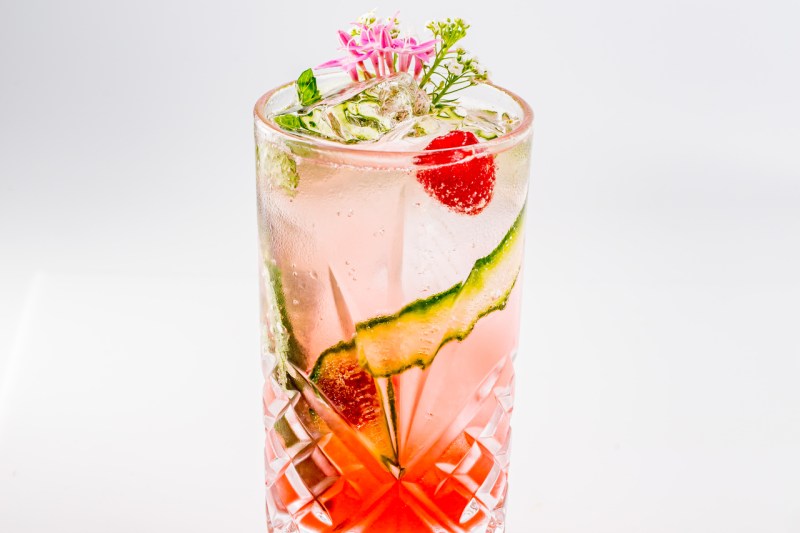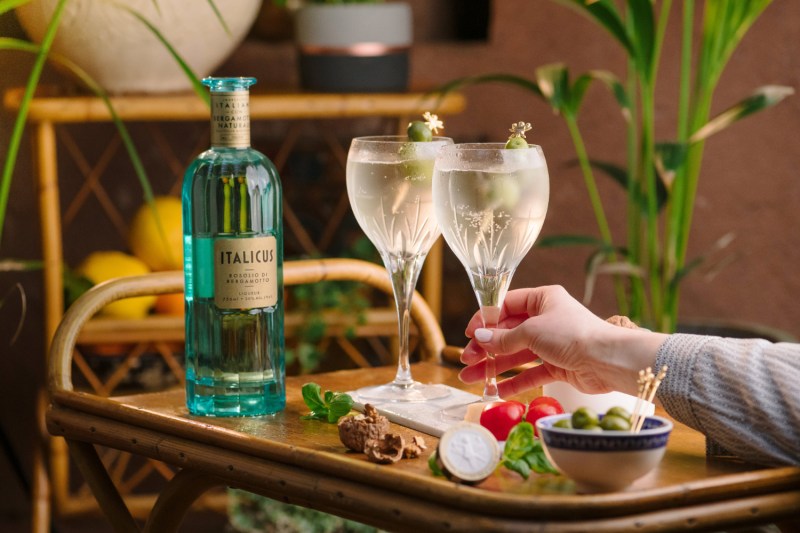
Tequila has always been an incredibly popular drink, especially when it’s mixed into a variety of cocktails. Better still, the agave spirit is a lot more versatile than you might think. Sure, we’ve all heard of and even mixed up a few margaritas or some tasty Palomas. But what of lesser-known applications, like cocktails kissed with bittersweet amari or salsas for dipping?
With several distinctive styles, from blanco to reposado, tequila’s uses are many. The lightest versions can perfectly accent an unbelievably refreshing batch of ranch water. Darker, aged versions can be used to cook with or join unexpected ingredients in your cocktail shaker. Want some proof? Check out some great, lesser-known tequila recipes below.

Pretty in pink
This youthful drink takes pink lemonade to new heights and it also can be easy on the eye when it is served in the right glass (highball) and with a nice garnish. El Tequileño provided the recipe.
Ingredients
- 2 ounces El Tequileño Platinum
- 1/2 ounce fresh lime juice
- 2 ounces pink lemonade
- 1 bar spoon agave syrup
- 3/4 ounce Triple Sec
- Top with soda
Method
- Add all ingredients except soda to a shaker over cubed ice and shake until ice cold.
- Strain into a highball glass over cubed ice and top with soda.
- Garnish with raspberries, edible flowers, and cucumber ribbon.

Italicus margarita
This riff on the tequila classic incorporates the goodness of Italicus, a delicious Italian liqueur that’s slightly sweet and made from bergamot, an orange-like citrus fruit that is native to southern Italy. Try the recipe below, or if you desire, you can also plug in a darker tequila and add a splash of Campari or Averna.
Ingredients
- 2 parts Italicus
- 2 parts blanco tequila
- 1 part lime juice
- 1 bar spoon agave nectar
- Green olives for garnish
Method
- Combine all ingredients in a shaker with ice and shake until cold.
- Strain into a coupette glass and garnish with green olives.

Tiger’s jaw
Chances are good that you never thought to combine tequila with aquavit. This recipe from Death and Co. does just that, also bringing brandy and some tropical flavors to the party.
Ingredients
- 1 ounce El Tesoro Reposado
- 1 ounce Linie Aquavit
- 2 teaspoons Kalani Coconut Liqueur
- 1 teaspoon Tradewinds Garam Masala Brandy
- 3/4 ounce mango syrup
- 3/4 ounce lime juice
- 1/5 ounce orange juice
- 1 dash Angostura Bitters
Method
- Combine all ingredients in a shaker and shake until cold.
- Strain into Tulip glass with crushed ice.
- Garnish with orchid.

Tequila salsa
Spiking your salsa is something you should probably be doing more often, especially when you have complementary tequila at the ready. This recipe is a great template to start with, but feel free to experiment with both tequila type and other ingredients, like tomatillos, mangos, or grilled corn.
Prep Time: 10 minutes
Total Time: 10 minutes
Yield: 6 servings
Ingredients
- 2 cups chopped seeded Roma tomato
- 1 cup chopped onion
- 1/2 cup chopped fresh cilantro
- 1 whole peeled, pitted, and chopped avocado
- 2 tablespoons fresh squeezed lime juice
- 2 teaspoons tequila
- 1/2 teaspoon kosher salt
- 2 garlic cloves minced
Method
- Combine all ingredients in a medium bowl and toss gently.

Braised beef steak with tequila, tomato, and orange
Cooking with tequila adds some great flavor to just about any dish. This recipe, courtesy of food.com, treats beef to the lovely combo that is citrus and tequila. The acidity from the tomatoes and orange complement the spirit perfectly and the earthy undertones play off of the meat.
Prep Time: 20 minutes
Total Time: 2 hours 20 minutes
Yield: 4 servings
Ingredients
New Mexico Chile Spice Rub
- 1 teaspoon ground cumin
- 1 teaspoon ground coriander
- 2 teaspoons New Mexico chile powder
- 1 teaspoon salt
- 1 teaspoon black pepper
The Roast
- 1 1/2 pounds boneless chuck steaks
- 2 tablespoons olive oil
- 2 cups thinly sliced onions
- 2 tablespoons minced garlic
- 1 cup tequila
- 1 can diced tomatoes
- 3 chipotle chiles in adobo
- 1/2 cup fresh orange juice
- 1/4 cup fresh lime juice
- 1 cup beef stock (chicken also works)
- 2 bay leaves
Method
Rub
- Combine all the ingredients in a small bowl.
- Sprinkle all over the meat; save leftover rub so you can add it to the braising liquid.
Roast
- Preheat the oven to 325 degrees Fahrenheit.
- Heat the oil in a large Dutch oven over medium-high heat. Sear the meat until all sides are nicely browned; this will take about 5 minutes per side.
- Once you’ve moved the meat to a platter, remove all fat from the pot except for two tablespoons.
- Add onions to the pot. Cover and cook until the onions are ready (they’ll be soft and just beginning to color). This will take approximately 10 minutes. Be sure to stir occasionally.
- Add the garlic and cook for another minute.
- Pour in the tequila and stir. You’ll need to scrape any browned bits from the bottom of the pot.
- Bring to a boil and reduce the tequila by about half (about 5 minutes). Add the tomatoes, chipotle chiles, orange juice, lime juice, stock, bay leaves, and any leftover spice rub.
- Once it’s boiling again, add the steak and reduce the heat to a simmer. Cover and transfer to the oven.
- Braise until the meat is fork-tender, turning it every 45 minutes. This step will take approximately 1 1/ 2 to 2 hours.
- Move the pot to the stovetop. Remove the meat and the bay leaf (it can be discarded). Degrease the liquid, then boil until it becomes syrupy (about 10 minutes). Season to taste with salt, pepper, and lime juice.
- Return the meat to the pot and cook for 2 to 3 minutes more to reheat. Slice or cut into chunks and serve with the garnishes.

What tequila should I use for cooking?
When it comes to tequila, one bottle is not the same as the other, especially when you’re cooking with it. According to the blog Alcohol Professor, the rule of thumb for cooking with tequila is the same basic one that applies to cooking with wine. Choose a tequila that you would enjoy drinking on its own, especially if you’re going to be serving the same tequila in cocktails to go with the food.
The other thing to look for is a tequila that says 100% agave on the label. According to Mexican law, tequila has to contain at least 51% agave to be called tequila. If the bottle doesn’t say 100% agave, it’s what’s known as a mixto, but don’t look for that on the label, as most of the time, the label simply fails to say it is 100% agave. These tequilas are generally the cheaper ones and can contain sugar and other ingredients to make them taste like tequila, but don’t have the quality of 100% agave tequilas.
Also, look at the label to determine how long a tequila has been aged. Generally, tequilas that have been aged longer tend to be smoother, and they will fall into one of the following categories:
- Blanco: Also known as silver, blanco can be aged for up to two months. Some consider it the purest form of tequila because of the absence of other flavors from aging.
- Reposado: With a name that means “rested,” this tequila is aged in oak barrels for at least two months, but less than a year. The taste is smoother than blanco with some complex flavors.
- Añejo: Meaning “aged,” this tequila is aged for at least a year, but less than three years in oak barrels. It’s darker and smoother than blanco and reposado and is often served on its own, much like a fine whiskey.
- Extra añejo: This means “extra aged,” and is aged at least three years, and is often the most expensive of the tequilas.


